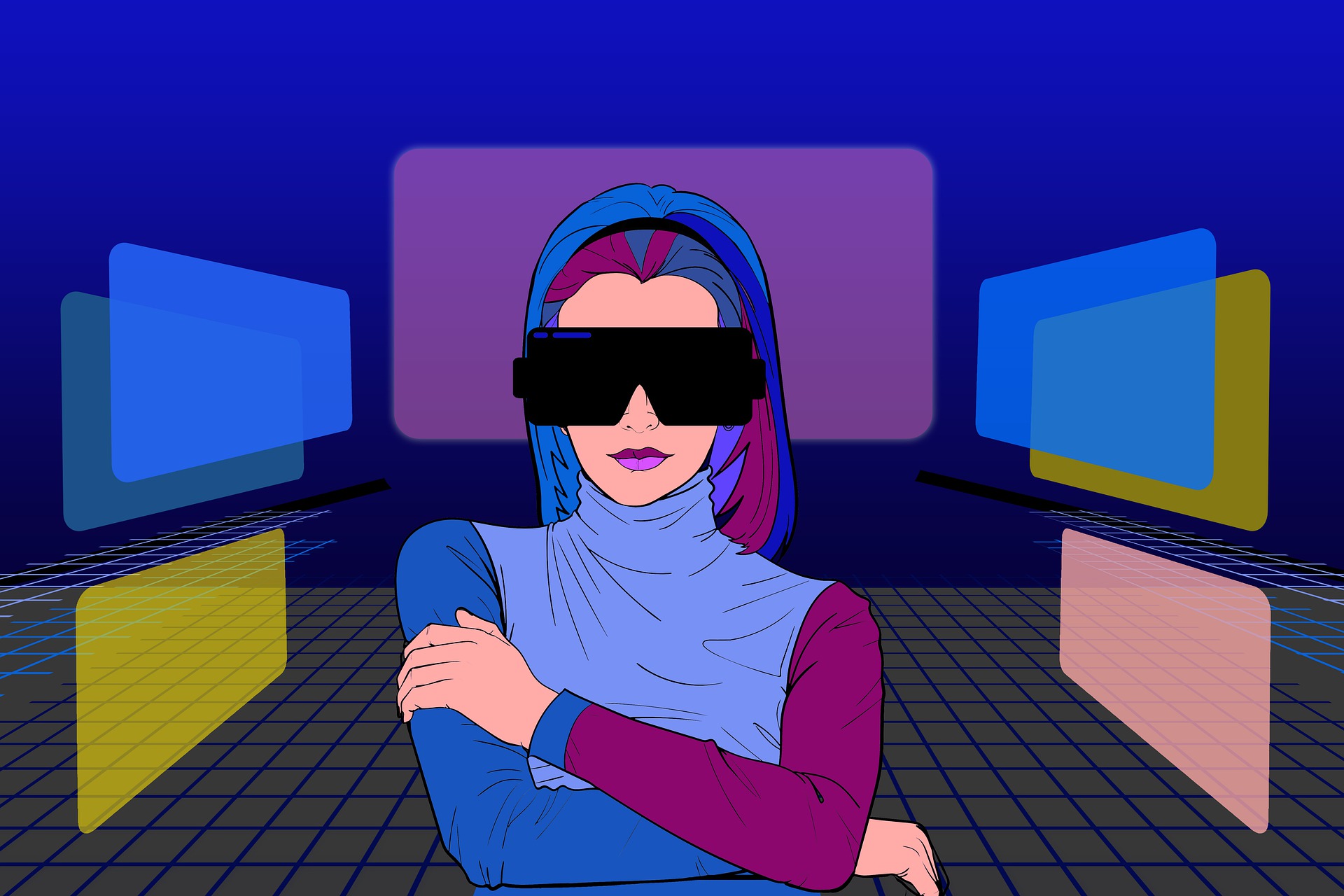
What is the Metaverse? Wan can we do with it?
Crédits photos : Pixabay
The Metaverse is a concept as fascinating as enigmatic. Lots of people tried to give a definition. Even the French government got interested and ordered a “Exploratory mission of the Metaverse development”. Let’s try together to analyze the conclusions of the attorney Adrien Basdevant and researchers Camille François and Rémi Ronfard. What is the Metaverse? Is there one or several metaverses?
Is it possible to define the Metaverse?
At the height of its popularity, the Metaverse was both fascinating and confusing. Because it became a buzzword and a marketing opportunity for the biggest company in the world, the Metaverse has suffered from a lack of clarity. Everyone wanted to take on the Metaverse but nobody was able to tell what it was.
Meta aka Facebook using the word didn’t help clarify its definition, even if Mark Zuckerberg established it as “the next chapter of the internet overall”. This marketing appropriation only put up a smokescreen on the potential of the Metaverse, according to the authors of the report. They talk about “some distrust” and “a reductive vision” of this “technological acceleration”.
A year after its dazzling rise, do we truly know what the Metaverse is? Is it web 2.0? Is it a world only accessible using virtual reality? Is the social dimension essential to the definition of the Metaverse? To completely understand the Metaverse, it is necessary to go back to its origins.
History and origins of the Metaverse
Since its appearance in 1992 to the first virtual worlds
The word “metaverse” appeared for the first time in literature. The author Neal Stephension used it in its science-fiction novel called Snow Crash. The author describes the Metaverse as “a digital world in which we can immerse ourselves through an avatar”. Stephenson even mentions using encrypted electronic currencies, years before the explosion of cryptocurrencies.
From then, the history of the Metaverse is not linear and involves many media and technologies. First of all: video games. They are universes where worldwide users can interact and play together while embodying characters. We are getting close to the Stephenson definition in the 90s! The main difference is, according to the authors: “ players build their own identity and become actors of a social reality”. It’s not about just playing anymore, it’s about living in a community. As stated by the authors, the Metaverse is a “fusion between real-time 3D video games and social media”.
From this fusion, virtual worlds are born. The first successful experience of the Metaverse appeared with the creation of Second Life. “Users can create avatars and rent spaces to interact socially. The users’ main activities are socialization […] and shopping […] and object production”, thanks to an internal currency. Other social virtual worlds will follow, such as VRChat, Mozilla Hubs and Meta Horizon.
Metaverse and virtual reality: friends or enemy?
It seems impossible to talk about the Metaverse without mentioning virtual reality and immersive technology. The concept of Metaverse is itself linked to immersion. When we say experiences in the metaverse, we mean immersive experiences. What does virtual reality bring to the metaverse?
Since the first virtual reality experiences in 1965, to the arrival of the first tools like CAVE in the 90s, virtual reality evolved a lot. Today, the biggest brands are developing ultra-modern headsets, with one goal: feeling more and more immersed in virtual experiences. This is possible with a better quality image, a latency reduction, cables disappearing, or external add-ons (sensitive, olfactory, etc).
Currently, VR headset technology is a tool serving for more immersion in the metaverse. Virtual reality brings what the metaverse can’t have: “sensitive interaction” and “the user’s physical involvement”, which allows exclusive and disruptive metaverse experiences. In conclusion, “varied technologies such as virtual reality […] help us gradually sketch out what [the metaverse] could look like”. Virtual reality cannot be separated from the Metaverse in order to accelerate its development.
Attempt to define the Metaverse
After 30 pages dedicated to the explanation of the Metaverse, the authors of the report give a definition: “A metaverse is an online service giving access to shared and persistent simulations of real-time 3D spaces, in which we can live immersive experiences together”. With this definition, the authors are sure of one thing: there are several metaverses.
When used in the singular like in this article, the Metaverse refers to the concept. But there are several metaverses, with different characteristics: hyper realistic vs voxelized, flat vs spatialized. The definition makes us understand one other thing: a metavers doesn’t necessarily involve the creation of an avatar. Sharing seems more important than incarnation as stated by the authors: “Simulation is shared by all the connected users and goes on when they’re gone”. Some immersive experiences can be lived without an avatar, especially in virtual and augmented reality.
The authors of the report distinguish 4 types of metavers:
- the metaverses without neither headset nor blockchain: the most numerous ones, like the pioneer SecondLife which has its own virtual currency and a closed economy.
- the metaverses with immersive headset but without blockchain: the new ones, perfect for performance games and virtual concerts.
metaverses without headset but with blockchains: those which are interesting for artists and creators who see an opportunity to sell their work thanks to NFT.
- metaverses with headset and blockchain: the least common because they are still complex to access and implement.

This large introduction of the Exploratory mission on the metaverses enlightens us on the definition of the Metaverse and its essential characteristics. The metaverse is a promising and complex universe, which can use cutting-edge technologies (blockchain, NFT, cryptocurrencies, virtual and augmented reality…). We are facing a phenomenon full of issues, challenges and many perspectives to come.

